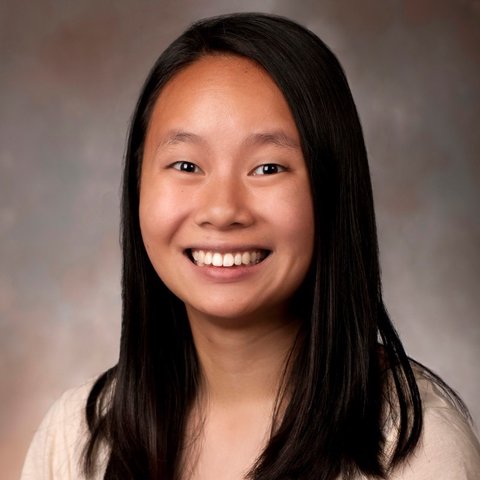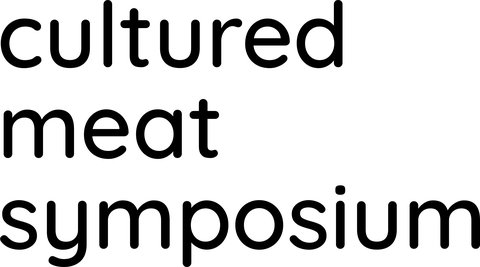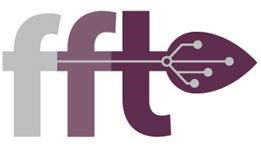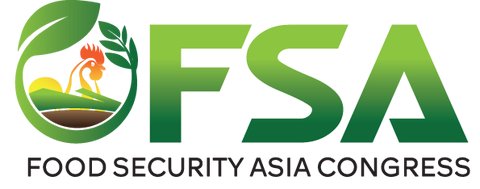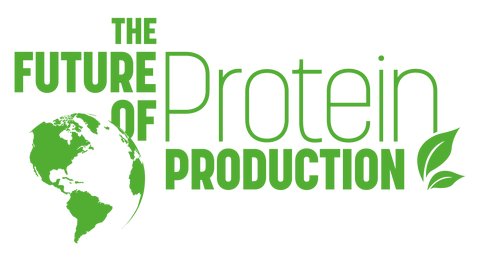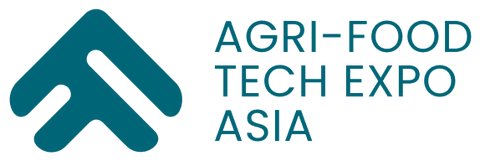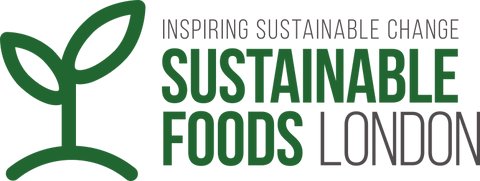Fighting Food Insecurity with Science: Food Accessibility for All
November 3, 2021 - 15 min read
This essay is second-place winner of the Student Essay Contest 2021. Eileen McNamara is a Neuroscience PhD Candidate Researcher at the Uniformed Services University of the Health Sciences and a Cellular Agriculture Society Fellow.
Hunger
On a cool spring day, a baby girl is born in a rural town. She is left in the care of kind strangers at the local orphanage. Although the staff are well-intentioned, the orphanage is much too crowded. Children cry from different rooms, wanting to be fed. The caretakers hurriedly walk down the “assembly line” of infants, giving each baby a spoonful of food. The food is sparse, bland, and lacking essential ingredients for growing children. Without intervention, many of these children would not thrive or may not even survive. About a year later, a loving couple make the long and tiring journey to the orphanage to adopt the small girl. When they return home, however, the girl is so lightweight that she cannot be recorded on the growth chart and needs immediate treatment for an infection. What if the rural town had enough food for all of its residents? What if the orphanage was able to provide nutritious and safe food for all the children? How would having access to healthy food from a young age change the children’s future? Unfortunately this malnutrition occurs worldwide in similar scenarios, but the promise of cellular agriculture (CellAg) technology provides hope that someday this hunger will not be felt by others.
Fast-forward a couple of decades and the same girl is grateful to be writing to you now, remarkably as a happy and healthy adult, but faces a new challenge alongside the rest of the world—a global pandemic. This time, however, I am in a more fortunate situation, but cannot help feeling sympathetic towards the many families now facing hunger and waiting in long food bank lines. Seeing these never-ending food lines amplified the call-to-action to help find a solution, leading me to CellAg. I quickly became incorporated into the Cellular Agriculture Society (CAS) as a lead author for the Humanity chapter focusing on six United Nations Sustainable Development Goals, including Zero Hunger, of the forthcoming CAS cellular agriculture textbook (Gasteratos, 2022) and created an ongoing CellAg and food security project through the CAS fellowship program. As a scientist, CellAg presents the perfect opportunity to combine both of my passions: to fight food insecurity with science.
The pandemic exposed several weaknesses that CellAg can help strengthen. My project aims to provide a roadmap for CellAg distribution so that as many people as possible can benefit from this revolutionary technology, which could be a valuable tool in impoverished communities to combat food insecurity.
Food Insecurity Research
An estimated 840 million people will face hunger by 2030, which has been accelerated by the COVID-19 pandemic (FAO et al., 2020; Feeding America). Food security as defined by the Food and Agriculture Organization of the United Nations is “a situation that exists when all people, at all times, have physical, social and economic access to sufficient, safe and nutritious food that meets their dietary needs and food preferences for an active and healthy life,” which consists of four main components: availability, access, utilization, and stability (FAO et al., 2020; Feeding America).
The first factor, availability, relates to food production and the amount of food present for consumption. CellAg offers a new method of generating food that could increase yield faster than traditional farming and reduce agricultural waste. Even countries with food surpluses, however, still suffer from high rates of food insecurity, demonstrating that addressing the other aspects of food security is essential (Hagedorn, 2019; McMichael, 2000).
The second factor, access, involves both geographic and economic distribution. CellAg may enable physical access to remote areas since cultivated meat is expected to have a longer shelf life than conventional meat. Shelf-stable, cell-based products could be made and transported farther away from consumers or alternatively the CellAg technology could be brought directly to locations that historically rely on imported food, creating more geographical independence (Gasteratos, 2019; Hagedorn, 2019; Santo et al., 2020). Many countries favor independence and are investing in technology to secure their food supply chains, a lesson also highlighted by the pandemic (Turrell, 2021). Economic accessibility will depend on price as expense continues to challenge CellAg, but if scaled properly cell-based meat may provide cheaper prices than conventional meat. In this case, farmed meat would become a premium product instead of CellAg items (Santo et al., 2020). If costs continue to decrease, then it is estimated that cultivated meat will reach conventional meat price parity by 2030 and can operate more sustainably than current farming methods (Brennan et al., 2021; Sinke and Odegard, 2021).
The third factor, utilization, describes the food’s nutritional value. Malnourishment, a metric for food insecurity, often involves “a lack of protein rather than a lack of calories” (De Boer and Aiking, 2011). Global malnutrition frequently occurs in low income countries that rely heavily on staple foods instead of on fresh produce and animal products (FAO et al., 2020). The demand for meat is increasing within more developing countries and as the human population grows. By 2050, the world population is estimated to increase to about 10 billion people (FAO et al., 2020; Hagedorn, 2019). Cell-based meat could possess identical or even enhanced nutritional values, such as healthy fat substitutions, compared to conventional meat or plant-based proteins (Day, 2013; Gasteratos, 2019; Santo et al., 2020). Overall food production closer to the communities it serves would also increase utilization by providing fresher and healthier, less processed food, which is a current obstacle for food deserts. Food insecurity in food desert neighborhoods is sometimes combated with access to one grocery store or even food sent via mail, but the available foods are processed, non-perishable, and expensive to transport (Fogarty, 2021). CellAg may offer fresh, healthy protein that would otherwise be too difficult to deliver to remote areas.
The final factor, stability, indicates the reliability of the food system. Food security encompasses additional issues, such as environmental sustainability and aspects of public health with food safety. With dwindling land availability, CellAg would be less dependent on natural resources and less vulnerable to climate change than conventional farming and could enable stability during natural and man-made disasters (Gasteratos, 2019; Hagedorn, 2019). Public health concerns, such as foodborne illnesses and zoonotic diseases, could be diminished through CellAg’s sterile production environment, further contributing to a stable long-term food system and possibly reduce the risk of future pandemics.
While all four factors are critical to comprehensive food security, as identified by others, food distribution appears to lie at the heart of the current food security problem (Hagedorn, 2019; McLellan, 2020). Geopolitical concerns surround the distribution of CellAg products and technology. Some essential questions about CellAg distribution include whether it will be centralized or decentralized and whether it will create a potential disparity that benefits only urban areas at the expense of rural communities (Hagedorn, 2019; Stephens et al., 2018).
Researchers predict CellAg to impact urban and rural communities differently. If CellAg is produced in cities, urban areas could benefit from increased food availability, nutrition, and economic advantages. Rural regions may benefit from reduced climate pollution caused by conventional farming, but may also suffer from job and community loss related to local agriculture displacement (Hagedorn, 2019; Santo et al., 2020). Mass unemployment of farmers could lead to poverty and ironically food insecurity for the same people who have historically supplied food for communities. Collaboration instead of competition with farmers to establish regulation policies to prevent unemployment by transferring job skills could mitigate some of these potential negative aspects (Hagedorn, 2019; Santo et al., 2020).
The disparity between urban and rural areas in the implementation of CellAg may also be extended globally. CellAg could increase the already existing economic and political power imbalance and allow for developed countries to monopolize power (Hocquette, 2016; Santo et al., 2020). A shared united goal to advance CellAg, however, may promote unconventional collaborations with a unified mission (Clarkson, 2021). Designing “cookie-cutter” production facilities could aid in widespread distribution by providing quick, easy-to-build framework. Expansion of CellAg infrastructure may extend to developing communities, increasing resource access. Other research, such as generating meat for astronauts in outer space, may overlap and provide the technology needed to enable CellAg production in remote areas on earth as well. Widespread sharing—and democratization—of CellAg could reduce the concern of equal distribution of the technology (Brennan et al., 2021; Clarkson, 2021; Gasteratos, 2019; Shojinmeat Project).
CellAg and Food Security Project
My research interest is how CellAg can change food distribution for impoverished communities with the ultimate goal of providing food accessibility to all. The aim of my project is to compare and contrast different CellAg distribution models and to identify designs most promising to alleviate food insecurity. I hypothesize that decentralized, open-access, and democratized CellAg distribution will provide the greatest opportunity for CellAg to reduce food insecurity.
The different distribution strategies to be studied include centralized, semi-centralized, and decentralized:
A couple of centralized models have already broken ground and are under construction as pilot production plants with one company announcing that over 1,000 pounds of meat can be generated in one day. Other companies have envisioned plans to start building soon (Albrecht, 2021; Martin, 2021; “Our pilot plant,” 2021). The Cellular Agriculture Society’s Cell-based Meat Facility (CMF) project has created an ambitious blueprint of a potential plant in New York City to provide 2 billion pounds of meat annually (“Project CMF,” 2021; Talks at Google, 2019). Another large facility based on data from 15 current CellAg and industry-related companies is described as producing about 60,400 pounds of minced meat daily and creating 200 jobs with cost competitive and more environmentally friendly procedures compared to conventional meat operations (Sinke and Odegard, 2021; Vergeer, Sinke, and Odegard, 2021). Other cultured meat factories have also been designed and one highly detailed architectural project, The Carnery, describes a centralized area for CellAg production, education, research, and restaurant (Dunsford, 2020; Whiteside, 2017). The Carnery is portrayed as an urban hub in Dorchester, United Kingdom, that uses a closed energy system with recycled waste and solar, water, and electric power. In addition to the structural facilities for CellAg production, museum, and restaurant, The Carnery campus has space for an algae orchard and incorporated vertical farming. The Carnery is estimated to yield about 150 pounds of meat per day (Whiteside, 2017). The centralized models generally contain a cell production and harvesting process (tissue culturing, media growth in large bioreactors, scaffolding or 3D printing station), packaging area, and distribution center.
The semi-centralized models include a Cellular Agriculture Lifecycle Pod and pigs-in-the-backyard design. The pod is described as a solar-operated, net-zero-carbon, walk-through unit that produces food for the local community and acts as a social hub. The pod is a condensed version of the larger centralized plants equipped with small bioreactors, product processing, and drying room (Byrd, 2018). The pigs-in-the-backyard model could include small farms with a few animals that assist with the initial cell collection for the start of CellAg production at a local CellAg facility, such as a cultured meat barn (Dunsford, 2020; van der Weele and Driessen, 2013). The pigs-in-the-backyard strategy could also be utilized in crowded urban areas without much space (Shojinmeat Project).
Decentralized designs consist of individualized CellAg production. The Renaissance Farm manufacturing system is a hybrid between the semi-centralized and decentralized designs. The Renaissance Farm concept is similar to a CellAg vending machine where a food production device can be individually installed. The machine could then be maintained by the Food-as-Software idea in which different food formulas are downloaded from a central database (Scialom, 2021; Tubb and Seba, 2019). Other strategies for individualized CellAg include personalized CellAg kitchen devices and do-it-yourself online instructions from an open-access database (Dunsford, 2020; Shojinmeat Project). Individual meal packets, such as meals-ready-to-eat for the military or for astronauts, could also provide technology for individualized distribution.
Experts in both the CellAg and hunger relief fields will be surveyed with a standardized questionnaire to evaluate the different distribution models, including a scoring system for how helpful the designs may be for alleviating food insecurity. Since different models may work for different locations, regional experts will also be selected from impoverished areas to offer insight about how various distribution strategies might assist their communities. Based on the questionnaire data, the final objective of this study is to provide a blueprint for a CellAg model(s) that would best reduce food insecurity.
Food security encompasses numerous dimensions, particularly public policy and consumer acceptance. Policy surrounding CellAg will be key to ensuring equal distribution and smooth operation of CellAg facilities. Knowledge of local laws and culture can strengthen policy by customizing CellAg implementation for the target community, which may ultimately determine the success of a new food strategy (Guinto, 2021). Other challenges that contribute to food insecurity include poverty, poor health, and lack of housing (Martin, 2021). Successful food banks offer a central hub that address several needs, such as employment and health counsel to combat holistic sources of food insecurity, not just providing food (“How big food banks are defining the pantry of the future”, 2021). In addition to understanding the origins of food insecurity, effective food banks also foster consumer trust. Transparency and food choice are needed to establish consumer acceptance (Fogarty, 2021; The Good Food Institute, 2021; “How big food banks are defining the pantry of the future”, 2021). Food is personal, so research related to the people who will be eating the food and work towards alleviating interrelated issues are also critical to successfully strengthening food security.
Although food security is a multifaceted problem with no single solution, CellAg presents an opportunity to address some of the key challenges related to distribution to impoverished communities. This project will provide a roadmap for CellAg distribution that will facilitate the human right to food and reduce the risk of unequal distribution. Food is fundamental to life, as partially illustrated by my personal experience alongside my peers at the orphanage. Perhaps CellAg can play a significant role in providing this basic need to more people in the future and perhaps my work can aid in preventing other cases of childhood hunger, paying forward my good fortune.
References
Albrecht, Chris. “Avant Meat announces new R&D and pilot manufacturing facilities in Singapore.” The Spoon, 26 April 2021. https://thespoon.tech/avant-meats-announces-new-rd-and-pilot-manufacturing-facilities-in-singapore/
Brennan, Tom, et al. “Cultivated meat: out of the lab, into the frying pan.” McKinsey & Company, 16 June 2021. https://www.mckinsey.com/industries/agriculture/our-insights/cultivated-meat-out-of-the-lab-into-the-frying-pan
Byrd, Emily. “Cellular agriculture: a global food-security solution.” The Good Food Institute, 15 March 2018. https://gfi.org/blog/cellular-agriculture-a-global-food-security/
Dunsford, Illtud Llyr. “Cellular agriculture Ltd; cultured meat and its industrial future at Nemo Science Museum, Amsterdam.” YouTube, 10 January 2020. https://www.youtube.com/watch?v=chlGzl6zHNA
Clarkson, Emma. “Is Cultivated Meat the Answer to Peace in the Middle East?” Plantbased Business Hour, 10 February 2021. https://vegconomist.com/plantbased-business-hour/is-cultivated-meat-the-answer-to-peace-in-the-middle-east/
Day, Li. “Proteins from land plants–potential resources for human nutrition and food security.” Trends in Food Science & Technology 32.1 (2013): 25-42.
De Boer, Joop, and Harry Aiking. “On the merits of plant-based proteins for global food security: Marrying macro and micro perspectives.” Ecological economics 70.7 (2011): 1259-1265.
FAO, IFAD, UNICEF, WFP and WHO. 2020. The State of Food Security and Nutrition in the World 2020. Transforming food systems for affordable healthy diets. Rome, FAO. https://doi.org/10.4060/ca9692en
Feeding America. Accessed 17 September 2021. https://www.feedingamerica.org/hunger-in-america/food-insecurity
Fogarty, Mark. “Mailing food and other solutions to rural hunger.” Food Bank News Strategy, 18 February 2021. https://foodbanknews.org/mailing-food-and-other-solutions-to-rural-hunger/
Gasteratos, Kristopher. “90 Reasons to Consider Cellular Agriculture.” 2019.
Gasteratos, Kristopher (ed.). Cellular Agriculture: Developing Animal Products with Animal Cells. Elsevier Science, anticipated 15 July 2022.
The Good Food Institute. “Dr. Marianne Ellis: designing large-scale bioreactors and bioprocesses for cultivated meat.” YouTube, 25 March 2021. https://www.youtube.com/watch?v=_9HwoIpNuCM
Guinto, Rodalyn. “What can synthetic biology do better to help end hunger?” SynbioBeta, 17 February 2021. https://synbiobeta.com/how-can-synthetic-biology-do-better-to-help-end-hunger/
Hagedorn, Clara. “The impact of clean meat on global food security: a qualitative study.” Nottingham Trent University, 2019.
Hocquette, Jean-François. “Is in vitro meat the solution for the future?” Meat science 120 (2016): 167-176.
“How big food banks are defining the pantry of the future.” Food Bank News Food Pantries, 8 December 2020. https://foodbanknews.org/how-big-food-banks-are-defining-the-pantry-of-the-future/
Martin, Katie S. Reinventing Food Banks and Pantries: New Tools to End Hunger. Island Press, 2021.
Martin, Noga. “5,000 burgers a day: world’s first cultured meat-production plant opens in Israel.” Jewish News Syndicate, 24 June 2021. https://www.jns.org/5000-burgers-a-day-worlds-first-cultured-meat-production-plant-opens-in-israel/
McLellan, Mike. “Biotechnology, cellular agriculture, and the right to food.” New Harvest, 29 July 2020. https://new-harvest.org/why-government-must-embrace-cellular-agriculture-food-security/
McMichael, Philip. “The power of food.” Agriculture and human values 17.1 (2000): 21-33.
“Our pilot plant.” Wildtype. Accessed 17 September 2021. https://www.wildtypefoods.com/our-salmon#pilot-plant
“Project CMF (Cell-based Meat Facility).” The Cellular Agriculture Society. Accessed 17 September 2021. https://www.cellag.org/work/project-cmf/
Santo, Raychel E., et al. “Considering plant-based meat substitutes and cell-based meats: A public health and food systems perspective.” Frontiers in Sustainable Food Systems 4 (2020): 134.
Scialom, Mike. “Cambridge start-up’s bio-reactor means cultured meat will be made anywhere.” Cambridge Independent, July 13, 2021. https://www.cambridgeindependent.co.uk/business/cambridge-start-up-s-bio-reactor-means-cultured-meat-will-be-9207118/
Shojinmeat Project. Accessed 17 September 2021. https://shojinmeat.com/wordpress/en/
Sinke, Pelle, and Ingrid Odegard. “LCA of cultivated meat: future projections for different scenarios.” CE Delft, February 2021. https://cedelft.eu/wp-content/uploads/sites/2/2021/04/CE_Delft_190107_LCA_of_cultivated_meat_Def.pdf
Stephens, Neil, et al. “Bringing cultured meat to market: Technical, socio-political, and regulatory challenges in cellular agriculture.” Trends in Food Science & Technology 78 (2018): 155-166.
Talks at Google. “A vision for meat production in 2040: Kris Gasteratos.” YouTube, 26 August 2019. https://www.youtube.com/watch?v=Q6xQWavrByQ
Tubb, Catherine, and Tony Seba. “Rethinking Food and Agriculture 2020-2030: The Second Domestication of Plants and Animals, the Disruption of the Cow, and the Collapse of Industrial Livestock Farming.” RethinkX (2019). https://www.rethinkx.com/food-and-agriculture
Turrell, Claire. “Singapore turns to cultured meat to boost its food security.” Life and Thyme, 26 February 2021. https://lifeandthyme.com/food/singapore-turns-to-cultured-meat-to-boost-its-food-security/
Van der Weele, Cor, and Clemens Driessen. “Emerging profiles for cultured meat; ethics through and as design.” Animals 3.3 (2013): 647-662.
Vergeer, R., Sinke, P., and Odegard, I. “TEA of cultivated meat: future projections of different scenarios.” CE Delft, February 2021. https://cedelft.eu/wp-content/uploads/sites/2/2021/04/CE_Delft_190254_TEA_of_Cultivated_Meat_Def.pdf
Whiteside, Chris. “The Carnery.” University of Bath (2017). Accessed 19 September 2021. http://www.chriswhiteside.com/the-carnery
